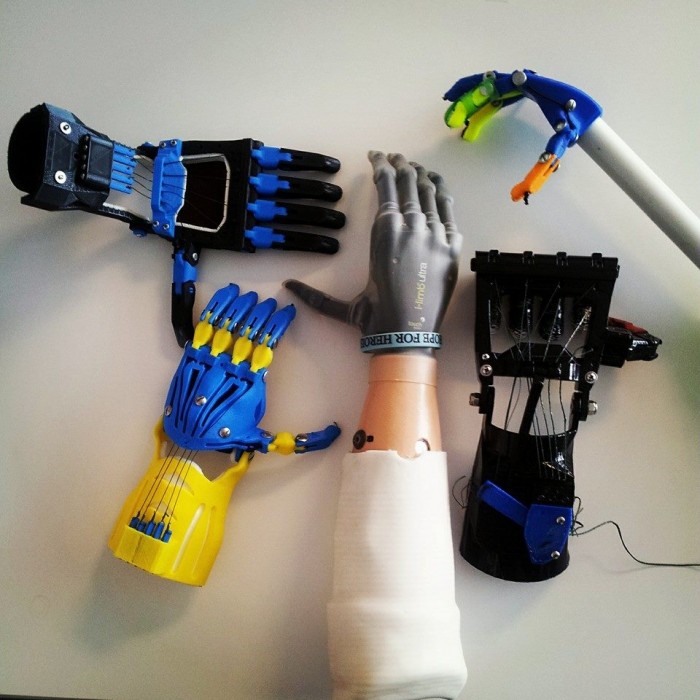
e-NABLE is a nonprofit global network of volunteers using their free time and respective skills to lend a helping hand to underserved children in need of assistive prosthetics.
This organisational network started in 2013 when Jon Schull, an American research scientist based at the Rochester Institute of Technology in New York, began coordinating offers to aid requests for 3D-printed assistive prosthetics from a 2012 video showcasing a home 3D-printed assistive hand called Robohand.
Schull created an interactive map where limb-different individuals could seek an alternative to expensive prosthetics and people willing to offer time, expertise and equipment could submit their services.
e-NABLE has now grown into much more than just the map. In just a three short years the website has morphed into a worldwide collaborative network where users have taken the original Robohand concept and tweaked into a myriad of designs and devices.
The Robohand itself came about in 2012 when American props builder Ivan Owen and South African carpenter Richard Van As, who lost his fingers in a workshop accident, started sharing ideas online about an assistive hand that could be produced with a simple desktop 3D printer.
After numerous reiterations they finally produced a working, cost-effective model and presented it to five-year-old South African boy Liam who was born without fingers on his right hand. Liam’s mother followed the blog “Coming up short-handed” where Richard and Ivan posted their progress and open-source plans for other to use and advance on their design.
These assistive hands are not full prosthetics but rather tools to aid children lead a life closer to those with fully functional limbs. It enables them to ride bicycles or catch and throw balls. Due to the shortcomings of the filaments used to print the hands, the prosthetics are not yet strong enough top support the weight of child, so swinging on monkey bars or doing handstands are not yet possible but as technologies grows so will the strength of the devices.
There is no exact figure to how many of these “helping hands” have been printed or exact record of the iterations and advancements made on each design as the innovation is based on open source software. This means anyone can download and print them out on 3D printer. This also means that anyone with the right software know-how can help change and enhance these assistive hands.




